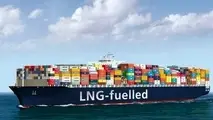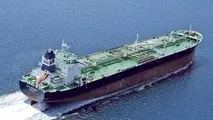Shipping: Commodities’ Pricing Trends During First Half of 2017 a Mixed Bag Says Shipbroker

The shipping industry is directly linked with the prices of raw materials and commodities like oil, iron ore and coal, since they are the key ingredient to the products’ trading and as such, their transportation. As such, the evolution of pricing trends this year is key to understanding future demand for shipping services. In its latest weekly report, shipbroker Intermodal said that “having just passed the second quarter of 2017, it is interesting to take a look at the performance of the commodity market and how certain commodities acted during this time. It is worth delving further into the S&P’s GSCI course over the past 6 months which exhibited a 10% decrease in the index over the past 6 months. It has been a harsh year for mainly the energy components which are down in the first 2 quarters. Livestock components are fairing very well, Industrial metals are mostly up, precious metals are marginally up and agricultural products are mixed with the glaring exception of sugar which exhibited the largest decrease for the period (~33%)”, said Intermodal.
According to Cotzias Intermodal’s Commercial Executive, Mr. Linos Kogevinas, “the oil market has left bullish players nervous after the recent spike on the Brent and WTI indices was quickly reversed over the weekend with respective 5.22%/4.93% decreases. This continues this quarter’s trend closing at about -17% from the end of Q1 and reaching similar levels to a year ago (+1.23% for Brent and -1.16% for the WTI). While the OPEC production cuts agreed upon were mostly abided by for the first 2 quarters, they were countered by increases in production in the States, Brasil and for certain OPEC countries over the past couple of months in addition to Russia’s announced opposition to any future production cuts also add to the oversupply angst. Despite what looked like a strong demand outlook for the near future, the overall weak market conditions further dampen expectations for the long term”, he noted.
Meanwhlie, “natural gas, which has been a growing industry over the past decade and now makes up 6% of the energy index, showed the least decline during the same period at -6.98% (+8.12% year-on-year). This is mostly attributed to increasing US exports and a stable production. Coal has continued a stellar run over the past year gaining ~10% over the past quarter and ~41% over the past year. This comes even amidst worrying news for the commodity’s future such as Coal India’s closing down of 37 (around 9% of its total capacity) of its mines and their consequent announcement of their intent to focus on renewables. Indias’, and other coal players, efforts to improve energy efficiency are seen. With the plummeting prices for renewable energy coupled with technological and governmental incentives already skewing strategic planning away from proposed investments in the sector, this will likely prove a sore point for coal going forward”, Kogevinas said.
Iron ore closed at $ 64.29 continuing it’s mostly stable course over the past week (+2%). However, even with the recent spike in iron ore prices, the past quarter has not been particularly kind to Iron Ore with losses of about 16% for the period at least partly due to the increases in Australian and Brasilian productions serving to curb the enthusiasm that was prevalent during the start of the year. To conclude, commodities have had a tumultuous course over the past year. The coming second half of the year is sure to bring further surprises for traders and it will be crucial to be vigilant for any developments that may have a significant impact on the markets”, Intermodal concluded.



